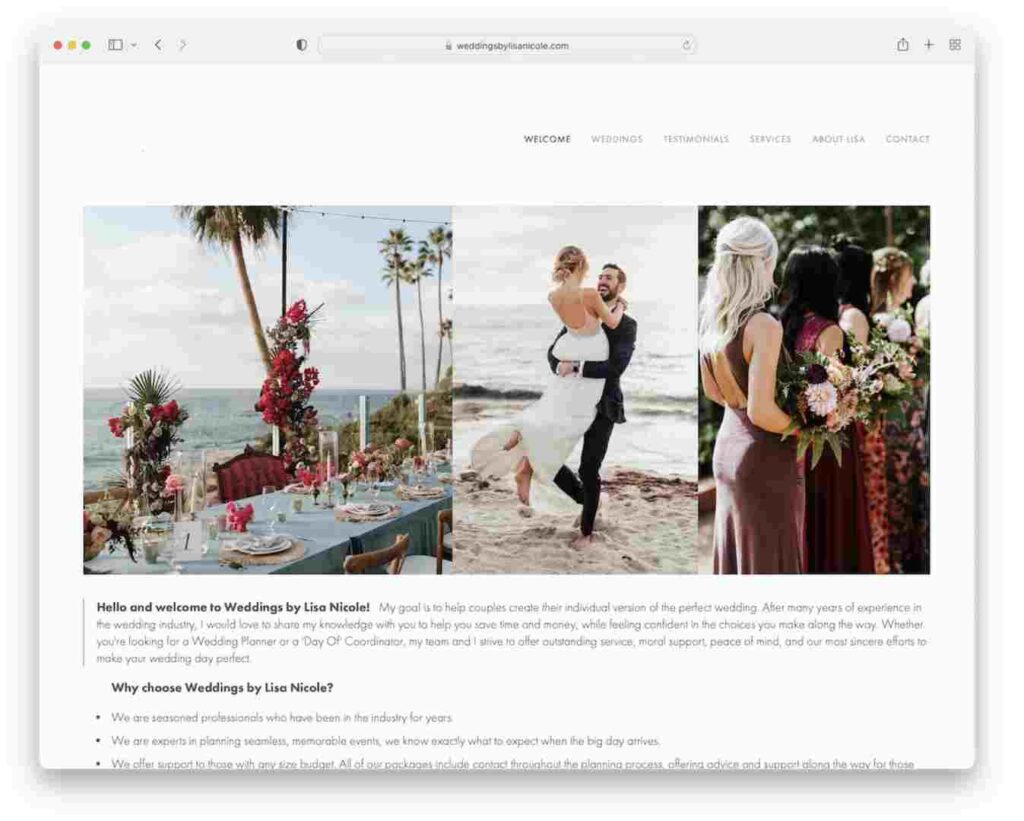Designing a website can seem like a daunting task, but breaking it down into manageable steps makes the process much more approachable. Whether you’re a small business owner, a blogger, or someone embarking on a new project, understanding how to design a website is crucial. This step-by-step guide will walk you through the entire process, from planning to launch, ensuring you create a functional and visually appealing website.
Table of Contents
- Introduction
- Planning Your Website
- Define Your Goals
- Identify Your Target Audience
- Choose Your Domain Name
- Designing Your Website
- Select a Website Builder or CMS
- Create a Wireframe
- Choose a Design Style
- Design the Layout
- Developing Your Website
- Add Content
- Optimize for SEO
- Ensure Mobile Responsiveness
- Testing and Launching
- Test Functionality
- Check for Browser Compatibility
- Launch Your Website
- Maintaining Your Website
- Update Content Regularly
- Monitor Performance
- Back Up Your Site
- FAQs
- Conclusion
Introduction
Understanding how to design a website is essential for anyone looking to create an online presence. Whether you’re building a personal blog, a portfolio site, or a business platform, having a clear plan and following a structured approach will help ensure your website meets your goals and provides a great user experience. This guide will take you through each step of the process, from initial planning to the final launch and beyond.
Planning Your Website
Before diving into the design and development of your website, it’s important to lay a solid foundation through planning.
Define Your Goals
The first step in how to design a website is to define what you want to achieve with your site. Consider the following questions:
- What is the purpose of your website? Is it to sell products, showcase your portfolio, or share your blog?
- What are your primary objectives? Increasing sales, building an email list, or driving traffic to your content?
Identify Your Target Audience
Understanding who will visit your site helps guide your design decisions. Ask yourself:
- Who are your ideal visitors? Consider their demographics, interests, and needs.
- What kind of content will appeal to them? Tailoring your content and design to your audience will make your website more effective.
Choose Your Domain Name
Your domain name is your website’s address on the internet. Here’s how to choose one:
- Keep it short and memorable: Aim for a name that’s easy to remember and type.
- Include keywords: If possible, incorporate relevant keywords related to your business or niche.
- Verify Availability: Confirm that the domain name is free and not currently registered by someone else.
Designing Your Website
Once you have a clear plan, you can start the design process.
Select a Website Builder or CMS
Choosing the right platform is crucial. Some popular options include:
- Website Builders: Platforms like Wix, Squarespace, and Weebly offer drag-and-drop functionality and pre-designed templates.
- Content Management Systems (CMS): WordPress, Joomla, and Drupal provide more flexibility and customization but may require more technical knowledge.
Create a Wireframe
A wireframe is a visual guide that outlines the structure of your website. It helps in planning:
- Page Layouts: Determine how each page will be organized.
- Navigation: Plan the menu and how users will navigate your site.
Choose a Design Style
Your design style should align with your brand and audience. Consider:
- Colors: Choose a color scheme that reflects your brand and appeals to your audience.
- Fonts: Select fonts that are readable and match the tone of your website.
- Images and Graphics: Use high-quality visuals that enhance your content and engage your visitors.
Design the Layout
With your wireframe and design style in place, start designing:
- Homepage: Create an engaging homepage that captures visitors’ attention and guides them to key areas.
- Content Pages: Design individual pages with clear headings, images, and calls to action.
- Footer and Header: Ensure these elements are consistent across all pages and include essential information.
Developing Your Website
The development phase involves turning your design into a functional website.
Add Content
Content is the heart of your website. Focus on:
- Writing Clear and Engaging Text: Ensure your content is well-written, relevant, and tailored to your audience.
- Incorporating Multimedia: Use images, videos, and infographics to make your content more engaging.
Optimize for SEO
Search Engine Optimization (SEO) helps improve your website’s visibility in search engines. Implement:
- Keyword Optimization: Use relevant keywords in your titles, headings, and content.
- Meta Tags: Include meta titles and descriptions for each page.
- Alt Text for Images: Add descriptive alt text to improve accessibility and SEO.
Ensure Mobile Responsiveness
With many users accessing websites via mobile devices, ensure your site is mobile-friendly by:
- Using a Responsive Design: Ensure your site adjusts to different screen sizes.
- Testing on Various Devices: Check how your site looks and functions on smartphones and tablets.
Testing and Launching
Before launching, thoroughly test your website to ensure it’s ready for visitors.
Test Functionality
Check that all features work as expected:
- Links: Verify that all links lead to the correct pages.
- Forms: Test contact forms, sign-ups, and any other interactive elements.
- Load Times: Ensure your site loads quickly to provide a good user experience.
Check for Browser Compatibility
Make sure your website works across different web browsers by:
- Testing on Major Browsers: Check compatibility with Chrome, Firefox, Safari, and Edge.
- Addressing Browser-Specific Issues: Make adjustments if your site looks different on certain browsers.
Launch Your Website
Once everything is tested and functioning properly, it’s time to launch:
- Select a Hosting Provider: Opt for a dependable hosting service to ensure your website remains accessible.
- Upload Your Site: Use your hosting provider’s tools to upload your website files.
- Announce Your Launch: Share your website with your audience through social media, email, and other channels.
Maintaining Your Website
Ongoing maintenance is key to keeping your website in top shape.
Update Content Regularly
Keep your site fresh and relevant by:
- Adding New Content: Regularly publish blog posts, updates, and new pages.
- Refreshing Existing Content: Update old content to keep it accurate and engaging.
Monitor Performance
Track your website’s performance to ensure it’s meeting your goals:
- Use Analytics Tools: Tools like Google Analytics help you monitor traffic, user behavior, and other metrics.
- Assess and Improve: Regularly review your performance data to identify areas for improvement.
Back Up Your Site
Regular backups protect your site from data loss:
- Set Up Automated Backups: Use your hosting provider’s backup tools or a plugin to schedule regular backups.
- Securely Store Backups: Save backups in a protected location to safeguard against data loss.
FAQs
Q: How do I choose the best website builder for my needs?
A: Consider factors such as ease of use, customization options, support, and pricing. Popular website builders include Wix, Squarespace, and WordPress, each offering different features and levels of control.
Q: How can I improve my website’s SEO?
A: Focus on keyword optimization, creating high-quality content, using meta tags, and ensuring your site is mobile-friendly. Additionally, building backlinks and optimizing load times can further enhance SEO.
Q: What are some common mistakes to avoid when designing a website?
A: Common mistakes include not optimizing for mobile devices, neglecting SEO, using outdated design elements, and failing to test your site thoroughly before launch. Ensuring your site is user-friendly and functional is key.
Q: How often should I update my website?
A: Aim to update your website regularly, depending on the type of content you have. For blogs, weekly or monthly updates are common. For business sites, updates might be less frequent but should still be done as needed.
Q: How can I make my website more engaging for visitors?
A: Use high-quality visuals, interactive elements, and clear calls to action. Additionally, regularly updated content and an intuitive navigation structure can help keep visitors engaged.
Conclusion
Understanding how to design a website involves careful planning, thoughtful design, and ongoing maintenance. By following this step-by-step guide, you can create a website that not only looks great but also functions effectively and meets your goals. From planning and designing to developing and maintaining, each step plays a crucial role in building a successful online presence.







